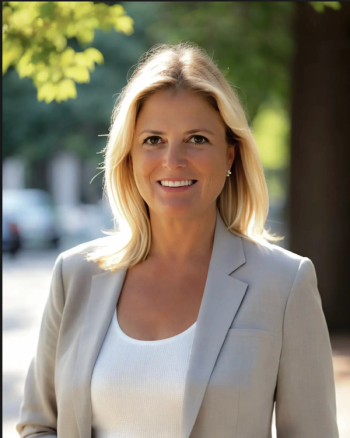
Pharma Companies Can Solve the Social Media Adverse Events Reporting Problem and Stop Worrying
Organizations can now confidently leverage social media and messaging platforms to market and share content, writes Dawn Lacallade.
Patients regularly use social media. In some cases, patients seek input and answers from social media before they visit their doctor. A
Whereas, research findings among the public portray a similar viewpoint:
- 77 per cent of individuals use a search engine as the primary tool for medical advice,
according to Pew Research .
- 90 per cent of people between 18 and 24 years old trust medical information shared on their social feeds,
according to HIT Consultant .
- 91 per cent of community members said online health communities play a role in their healthcare decisions,
according to Wego Health .
Despite these behaviors and preferences, many pharmaceutical companies have been hesitant to establish a social media presence, ultimately because social media presents challenges for the pharmaceutical industry due to FDA regulations for adverse events.
Solutions for adverse event management can keep brands online and out of trouble
There are several reasons that make the case why medicine brands should take part in social media with patients and offer brand channels online. Pharmaceutical companies need to be proactive at managing consumer perception and the reputation of their brand. By monitoring their own social media and online communities, companies are less apt to be caught off guard by negative social comments or adverse events.
This monitoring can even be used in new channels like messaging and chatbots. For example, when a chatbot or other automation receives a user response that mentions key words that alert the brand, those words can trigger a message to a human agent at the brand or partner to review the content and submit it as an adverse event to colleagues in MedReg or pharmacovigilance.
It’s important that the technology and adverse events reporting tools brands utilize for adverse event management in social media and messaging maintain the company’s compliance with the FDA, can escalate chatbot adverse event conversations to humans, continually monitor and act when adverse events occur, as well as report and archive conversations for regulatory compliance.
Using FDA compliance software tools and human interaction that ensure compliance, pharma companies have much more they can gain by developing marketing, social and messaging campaigns. After all, Facebook’s Messenger platform has more than 1.3 billion monthly active users. Facebook-owned messaging apps send billions of messages a day. If you’re wondering how these chatbots and Messenger could help your brand derive value from social media, here are a few use cases to advance communications utilizing these channels:
- Identify concerning symptoms - Users may be able to ask chatbots personal questions about their health. The chatbot can then offer responses from the brand’s vetted resources based on keywords from the user. And ultimately empower the user to have a more valuable conversation with their physician or health care provider.
- Help find providers - By providing a zip code, chatbots can accurately link to or provide a patient with a list of appropriate healthcare professionals or specialists nearby their location.
- Offer useful information - Chatbots can provide users with information on a variety of topics, such as how to respond to inquiries on certain health scenarios, the correct way to use a medical device, a complex drug procedure, or track exercise and eating habits.
- Automate your FAQ – Medicine brands can automate their most frequently asked questions. The brand can replace what would normally be a cumbersome website navigation experience with chatbots and automation to deliver these answers.
Healthcare is already realizing tangible benefits from social media conversations
Many healthcare companies are using social media, in-app messaging, and chatbot experiences to work for them in a variety of ways, and with great success. With that in mind, here are a few examples of how these channels could empower brands to improve processes, engagement, and better meet the expectations of patients:
- Social media–based research could help life sciences companies understand the patient journey for a condition better and identify specific points along the journey where the patient needs help.
- Social media listening during a medicine or medical device product launch could help understand patient and caregiver expectations for value, access, and pricing.
- Social media analytics could help a pharmaceutical manufacturer see the demand patterns of new medications.
Facebook messenger offers healthcare brands the opportunity to reach more than a billion users
Messenger enables pharmaceutical companies to have conversations and share information with consumers worldwide. One of the most well-known chatbot examples and human interaction, is HealthTap. HealthTap is an interactive health company that has developed a Messenger chatbot, which allows patients to quickly find out what they may be suffering from and how to talk about their possible condition with their healthcare provider.
If the answer isn’t part of the chatbot’s scripted response, a patient can submit questions to more than 100,000 doctors in the U.S. The patient can expect an answer within 24 hours or request a live consultation. By partnering with Facebook Messenger, HealthTap immediately increased their reach to more than 1.3 billion users that already have Messenger installed on their devices.
Using Messenger’s social media presence, there are innumerable ways that pharmaceutical brands could use chatbots in the messaging platform to streamline business operations, while enhancing the patient experience.
- Doctor Discussion Guide: Provide patients with a natural experience to help them communicate more effectively with their doctors.
- Benefits Verification Support: Simplify the complexities of the perplexing benefits verification process.
- User Registration and Savings Card Distribution: Drive user registrations, building CRM opt-ins along with the distribution of a Rx savings card.
- Customer Support and Content Delivery: Offer a more accessible and engaging method of communication and content delivery for patients on medications.
- Filling out forms: Chatbots can be implemented midstream in a Messenger conversation when a repetitive task comes up, like regular questions, scaling your workforce, and making your team more effective.
Although pharma brands are highly regulated, chatbots and Messenger can help marketers accomplish their business objectives in new ways. Chatbots may never be able to replace human interaction, but they can help pharma marketers scale ordinary regular tasks.
Organizations can now confidently leverage social media and messaging platforms to market and share content such as disease-specific educational information for consumers, the latest details on new drugs, devices, or to create patient support groups and online communities. With modern FDA adverse events monitoring software and human agents, these channels can help marketers identify the unmet needs of patients, innovate, and figure out where marketing dollars should be spent to have the greatest impact and satisfy patient needs and demands.
Dawn Lacallade is Chief Social Strategist & Pharma Practice Lead,
Newsletter
Lead with insight with the Pharmaceutical Executive newsletter, featuring strategic analysis, leadership trends, and market intelligence for biopharma decision-makers.





